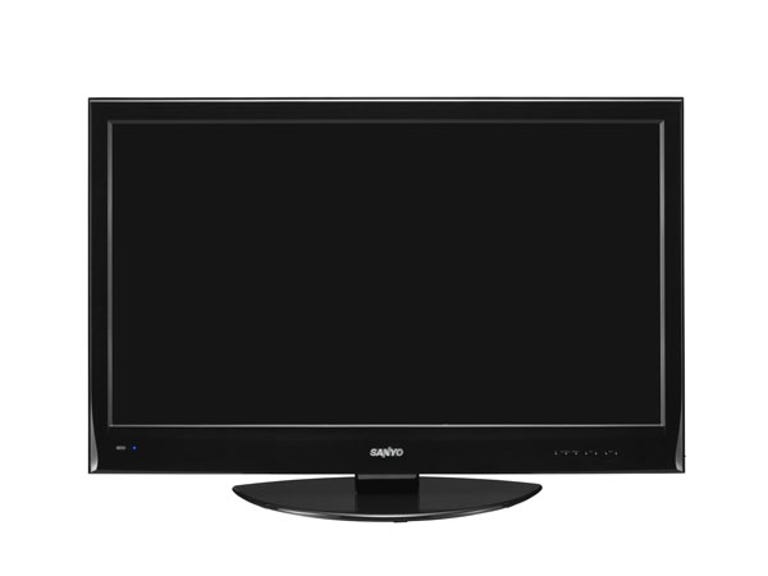 Why You Can Trust CNET
Why You Can Trust CNET Sanyo LCD40XR10F review: Sanyo LCD40XR10F
The Sanyo LCD40XR10F is a budget LCD that offers decent picture quality for the price and a handy USB time-shift feature.
Three years ago, Sanyo had the unenviable pleasure of releasing one of the poorest televisions we have ever seen. The Sanyo LCD-47XR2was a product that was years behind its time and almost as expensive as the superior Sony product to boot. So you can imagine our trepidation when we unpacked the company's latest model. Thankfully, we were about to be very pleasantly surprised.
The Good
The Bad
The Bottom Line
Design
While the premium televisions come with see-though this and brushed aluminium that, the Sanyo LCD40XR10F is a little more modest. It comes in a single colour: black. As a result, it could look a little anonymous on a shop floor, but it won't sully up your lounge room like a TV shaped like a pyramid or even something lascivious.
As a budget LCD, the Sanyo is a lot thicker than the slimline flagships, and the finish on the rear of the TV is pretty cheap-looking, but the unit appears to be well-built.
Features
The Sanyo is a bare-bones unit and doesn't come with much in the way of fancy trimmings, except for one small exception that we'll shortly detail.
The LCD40XR10F is a 40-inch LCD TV with a full high-definition resolution that includes a standard fluorescent (and not LED) backlight. Processing features are fairly light-on, with no 100Hz modes, but it does have a noise-reduction circuit.
One feature that we've seen pop up on several TVs recently — Kogan and LG come to mind — is USB time-shifting (though not recording). The Sanyo allows you to connect a USB disk and use it to time-shift or "pause" current programs. Unfortunately, the TV misses out on an EPG, so it offers no recording. The USB port also supports music and movie playback, as well.
If power consumption is an issue, then there are certainly better-performing TVs out there; the Sanyo scores a meagre 2.5 out of six for its Energy Star rating. This makes it relatively inefficient, and you can even feel the heat coming off the panel when standing next to it.
For a cheap telly, the Sanyo offers a lot of different inputs including three HDMI, two component video, twin composites, 3.5-mm mini-jack and VGA. Unusually, it offers a coaxial digital output, not the usual optical, in addition to an A/V out.
Performance
One of the tasks that we perform before testing a TV is to calibrate it using the Monster/ISF HDTV Calibration Wizard DVD. When setting up the Sanyo, we found that it wasn't able to reproduce "blacker than black", which is an integral part of setting the black levels correctly. Instead of appearing black, they came out a fluorescent blue, and while this is not actually a problem — you aren't supposed to see these shades, anyway — it's perhaps an indication of compromises made to keep the price low.
While we're on the topic of contrast, we found that the Sanyo had a usable amount of black with the lights on. Blacks looked "black" instead of "green", as can sometimes occur. However, there is no backlight control, so it didn't look as good with the lights off — so a quick brightness adjustment was required. There was also a small amount of backlight-bleed, as well.
Unlike the Kogan Elite 32-inch, with its LG heritage that we suspect the Sanyo shares, there were no signs of contrast enhancement when quickly switching from a dark scene to a bright one.
Running a series of synthetic tests on the LCD40XR10F, we found that it performed well, with decent support for different resolutions and frame-rates without much in the way of dreaded "jaggies". Only when subjected to the noise tests did the picture appear overly noisy.
Watching One HD proved that the TV can do sport, unlike the Sony EX420 that we compared it against. Where the Sony created a slideshow effect on pans and fast movement, the Sanyo was smooth and free of blur.
With Blu-rays, the picture was suitably lifelike. When given the bridge scene from Mission Impossible III there were no moire effects visible on the railings of the bridge. The camera movements were a little jerky, though, as there is no official support for the native 24p frame rate afforded by Blu-ray. Detail levels were very good, with every pockmark on Tom Cruise's not-so-smooth face visible. Mosquito noise effects, as with the synthetic tests, were a small issue, though.
When you're buying a TV, sound quality is a secondary concern. So, too, it seems, for the Sanyo designers. Sound was dynamic, but when compared directly against the Sony EX420, voices were noticeably less intelligible. You could pump the sound up to decent levels, but the results had definite "chugging" effects on explosions and a brittleness to the treble.
The TV's time-shifting feature worked quite well, though you'll probably need to experiment with using physical disks rather than USB keys. An 8GB thumb drive gave us a "USB disk speed too low" message, while an external 5.25-inch drive worked fine.
When using the additional media playback facility, we found that the playback screen was attractive, but again the speakers let the side down with a lack of treble detail and a "ringy" quality. Outputting sound to an amp via the digital coaxial port helped enormously.
Conclusion
We're at a period of changeover now, and at its retail price, the Samsung isn't the best deal when we've seen excellent TVs such as Panasonic's VT20 running out in the low AU$1000s. Sniff around for a good deal, as the Sanyo is also expected to be replaced in the next few months. But be assured that the company has done its utmost to reinstate its reputation for value-for-money and performance with the LCD40XR10F.


